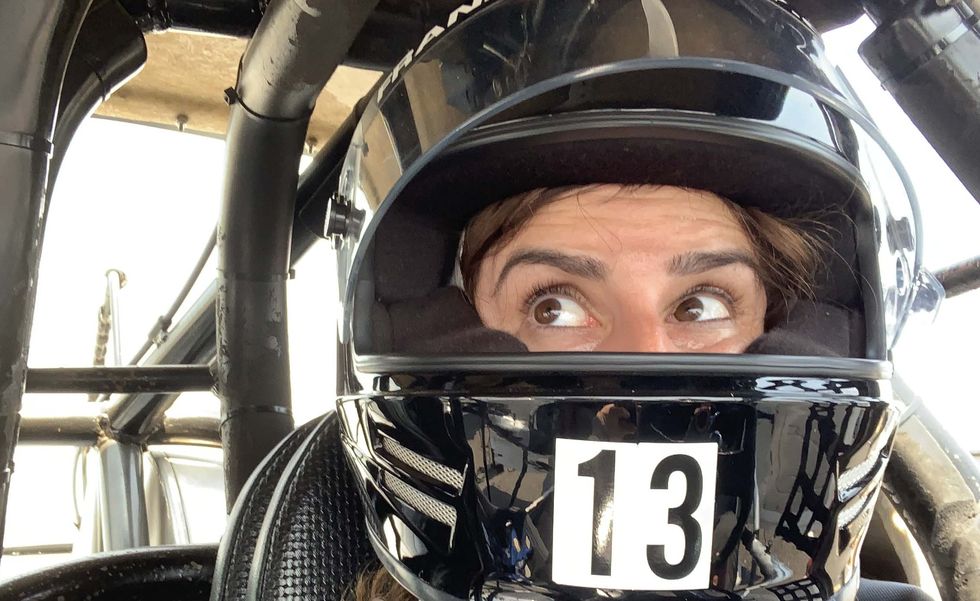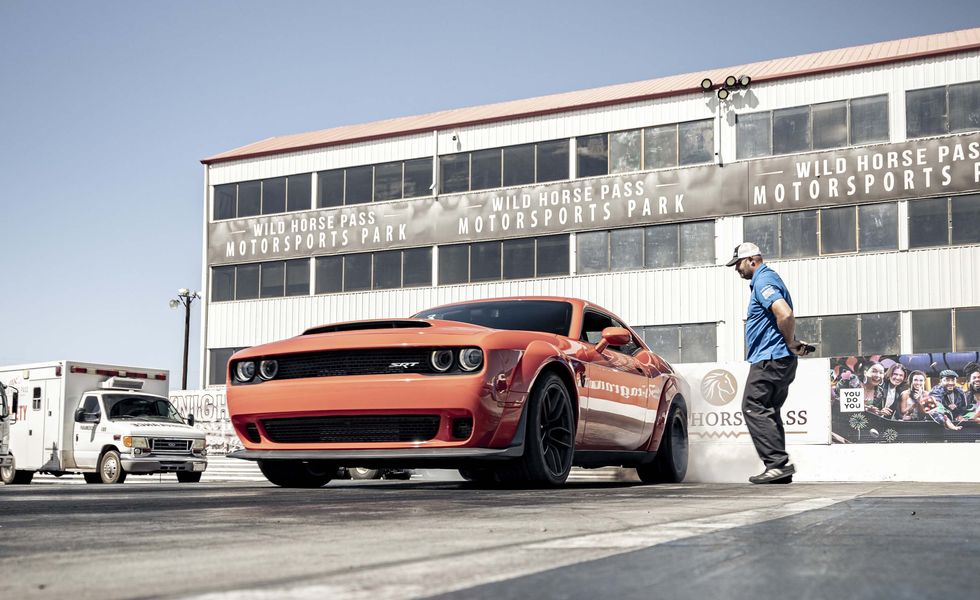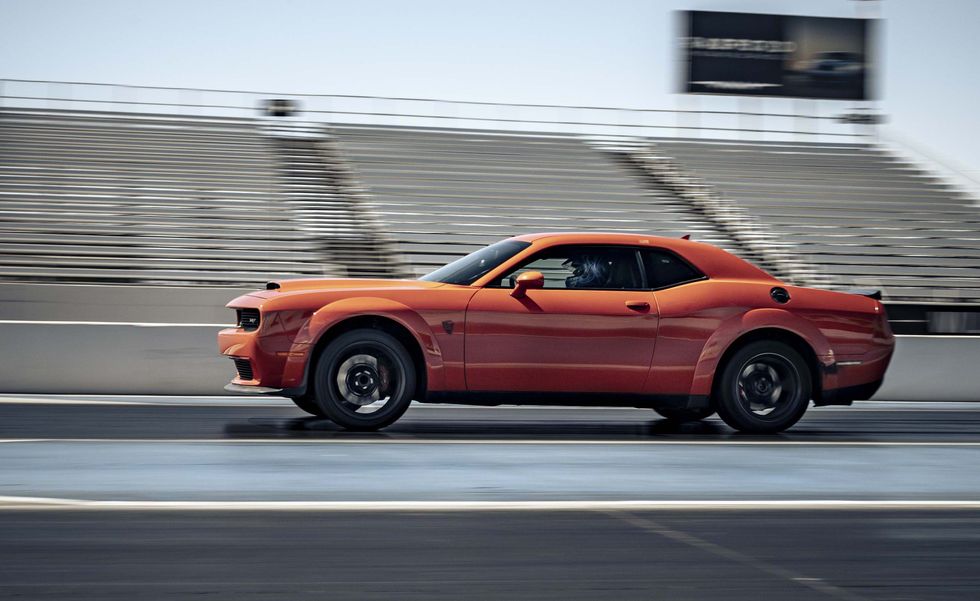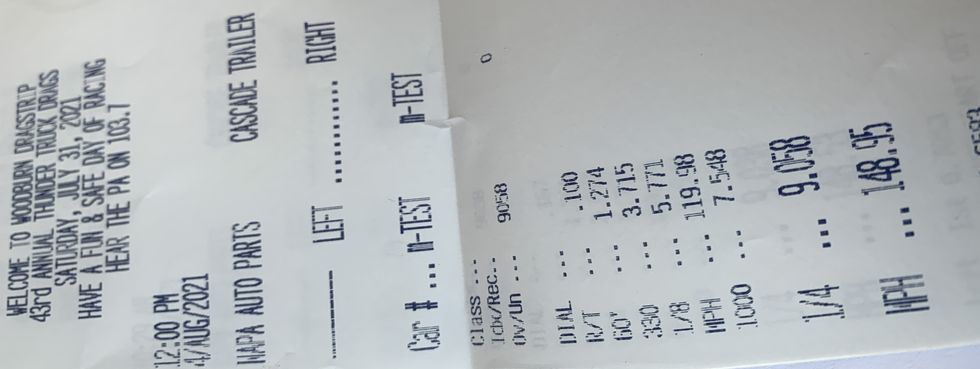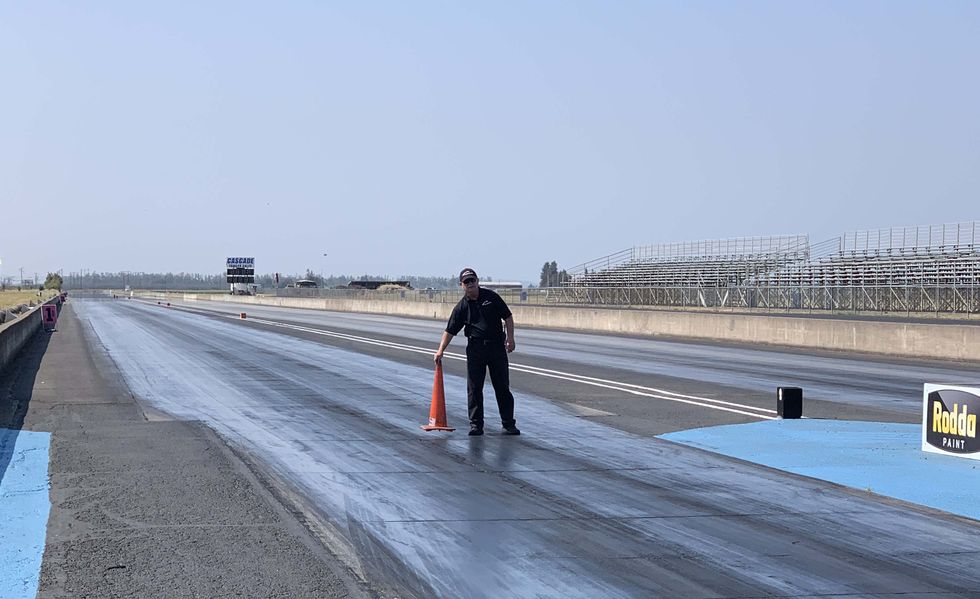“It’s just a straight line, how hard can it be?” Every drag racer on earth has heard that, from someone—usually a road racer—dismissing quarter-mile competition as easy to do and skill-less.
The truth is, for all its loud engines and smoky starts, drag racing is a subtle motorsport. It’s easy to do it if all you want to do is move quickly from point A to point B. It’s hard to do it perfectly, and if you want to win, that’s how it has to be done.
Practice makes perfect, and indeed, regular attendance at your local track will make you a better racer, but even with on-car data loggers and attentive crew members, it can be difficult to pinpoint where you’re losing time. Is it at the launch? At the shift? In your head before you even get to the track?
For those who know that the answer to “How hard can it be?” is “Very,” there are several different drag racing schools available to help you hone your skills. While many tracks host some version of a dragster experience, the two most dedicated schools we’ve tried are Frank Hawley’s Drag Racing School, run by two-time Nitro Funny Car champ Frank Hawley, and the Radford Racing School SRT program, which comes as part of a Dodge Demon 170 purchase but is also available to folks wanting to experience Dodge’s street-legal quarter(-mile)-pounder without the monthly payment.
Chandler, Arizona
One-day course
Cost: $2499 to $2998
Cars: Dodge SRT Demons
Pros: Comfy, cool cars, applicable to a wide range of racers, beginner-friendly, includes lunch
Cons: Only in Arizona, pricey, not as quick as dedicated race cars
Let’s begin with Radford, because this program is perfect for beginners. It’s designed for new owners of Dodge Demons, so the one-day class is focused on using in-car tech, plus learning to feather the throttle and deal with poor traction, all of which is applicable in some way to most new cars. The Radford instructors also spend time familiarizing the students with how to go through tech inspection, how to stage the car at the “Christmas tree,” what the lights mean, and proper track exit strategy.
For folks with some experience, it may be a little basic, but because it is almost all in-car time, it never feels dull. The instructors are patient and supportive, the cars are fast and comfortable, and since it is held on the Radford (formerly Bondurant) school property, there is plenty of time to practice burnouts and launches on the skidpad. Another benefit to sharing a campus with the Radford road course is a training segment in the drift/skid practice car, which is an excellent reminder that “You go where you’re looking” is the truest statement in car control.
Obviously, the Radford school is good for Dodge Challenger owners, but it’s also a nice setup for anyone racing a street car. Most schools focus on dedicated drag cars, with full cages, big slicks, and launch technology that lets you leave with a button. The Radford school trains you on a foot-brake launch, which is more applicable to anyone thinking of casually running their Tesla, Vette, or even an older muscle car. Time slips can range from high nine seconds if you’re a good student to mid-13s if you’re not.
Gainesville, Florida (some traveling programs)
One-day or two-day course
Cost: $449 to $1795 ($2295 for non-Florida programs)
Cars: Big-block Chevy Super Comp Dragsters or Super Comp Firebirds
Pros: Intensive feedback and coaching, NHRA licensing for down to 7.50, Real race-car experience
Cons: Lots of classroom time, more serious vibe
A friend mentioned recently that she has been reluctant to do Hawley’s school because she heard he plays a video of your run in front of the class and critiques it. “That sounds horrible,” she said. Well, it is true that he plays your run and critiques it, and yeah, it’s a little horrible, but also, it’s incredibly helpful.
All racers have the initial impulse to blame the car or the track for a bad session, but usually the loose nut is behind the wheel. Hawley’s approach forces you to look at every detail of your run, from lining up the car to releasing the trans-brake. Is the wheel straight? Are you looking far enough ahead? Are you staying in it all the way down? Learning to recognize and admit your mistakes is a crucial part of improving, and Hawley is never cruel. He’s straightforward and doesn’t sugar-coat, but he isn’t mean, and if there’s a recurring issue, he and his team will take extra time to help you figure out how to improve.
Hawley’s school involves a lot of classroom time, which might be frustrating to folks who just want to jump in the seat, but if you’re interested in racing more competitively, Hawley’s lectures on mental health and consistency are invaluable. He’s not just teaching you to put the pedal down; he’s teaching you how to do it the same every time, how to control your intrusive thoughts, and how to win. Ten sessions with a therapist wouldn’t get you as much good advice as two days with Frank.
While Radford uses street cars with harnesses, the Hawley school is full-on race cars, with cages, limited visibility, no backup cameras, full five-points, and fire suits. It makes you feel like a serious racer, and it’s good practice on suiting up and strapping in if you’re planning on racing for real. The cars—big-block Chevy powered dragsters or Firebirds, depending on which class you sign up for—are consistent and quick, running low 9s for the door cars and 8s for the dragsters. Frank and his team can sign off on an NHRA license that’s good down to 7.50 if you make all your runs. Radford also does licensing, but only to 9.00, for the new NHRA street-car credential.
Having done both classes, I’d say either will help you improve as a driver, both on a dragstrip and in general. The Radford course is less stressful, with more time in a car, but the Hawley school would be more helpful to a driver with experience looking to improve as a competitor or step up to a faster car class. Both are hugely fun.
Special Mention: Roy Hill
Because I haven’t taken Roy Hill’s classes, I didn’t include Roy Hill’s Drag Racing School, but it looks like Mike Rowe, former host of Dirty Jobs, found drag racing was harder than he expected when he hopped in Hill’s dragster.

Senior Editor, Features
Like a sleeper agent activated late in the game, Elana Scherr didn’t know her calling at a young age. Like many girls, she planned to be a vet-astronaut-artist, and came closest to that last one by attending UCLA art school. She painted images of cars, but did not own one. Elana reluctantly got a driver’s license at age 21 and discovered that she not only loved cars and wanted to drive them, but that other people loved cars and wanted to read about them, which meant somebody had to write about them. Since receiving activation codes, Elana has written for numerous car magazines and websites, covering classics, car culture, technology, motorsports, and new-car reviews.

